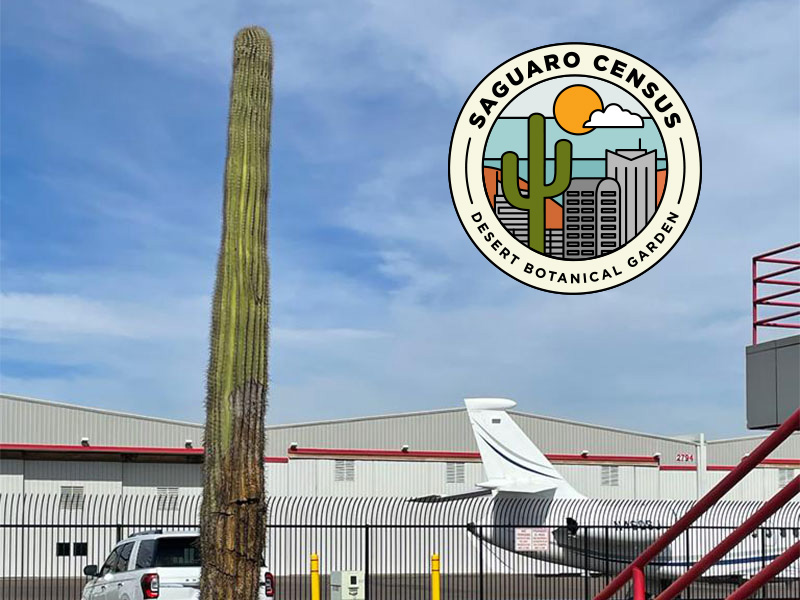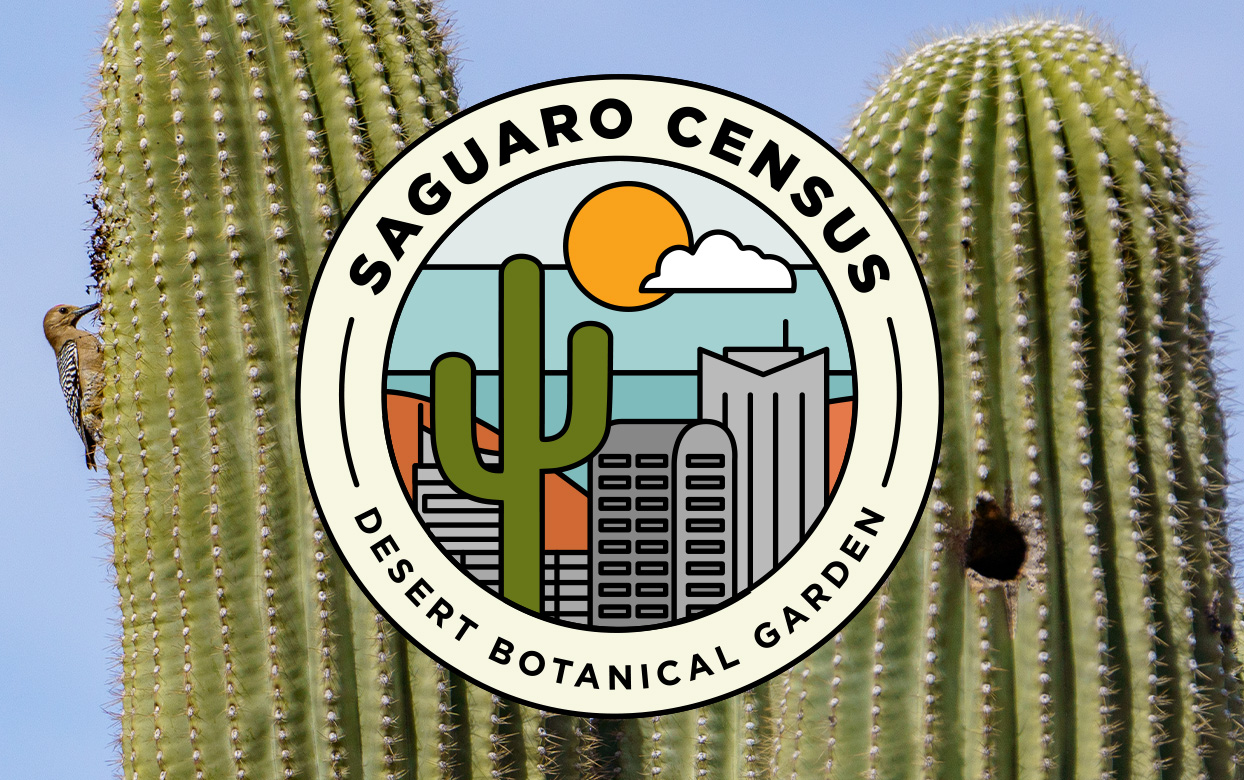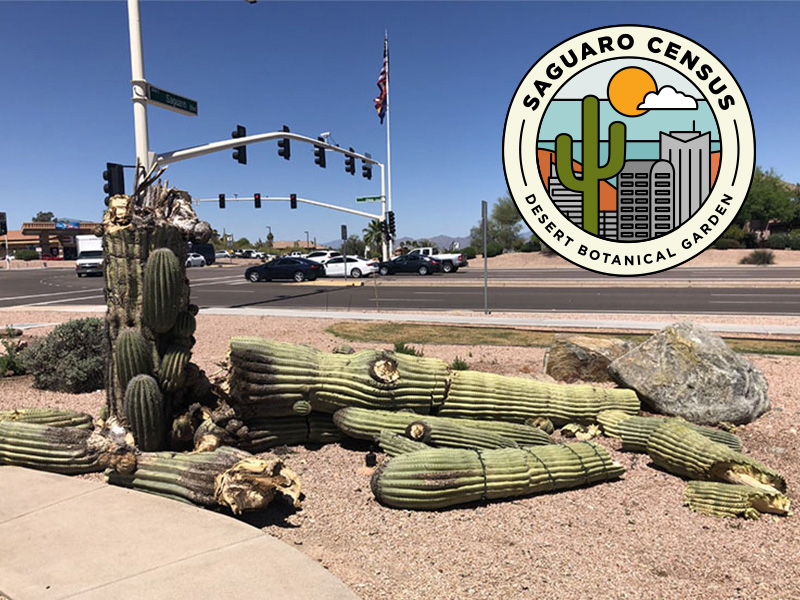Desert Botanical Garden will hold its second annual urban Saguaro Census during the month May to document more saguaros throughout the Phoenix metro area, as well as monitor the ones that were recorded last year. Valley residents and volunteers can participate and help the Garden track these desert icons all month long.
Beginning May 1, participants can document saguaros (Carnegiea gigantea) using iNaturalist, a free smartphone app and website. Participants can share their observations on the app under the Metro Phoenix Saguaro Census project. An observation can include photos, a location and notes about the general health of the saguaro. The Garden also asks participants to share observations in areas that currently have an undercount, including the West Valley, South Phoenix and downtown areas.
This year, the Garden wants to document saguaros that are stressed or dead. Participants can share information about a dead saguaro by filling out a short online form that includes the age, location, estimated size and possible cause of death. The information is critical in helping Garden scientists understand the health and demographics of urban saguaros.
In 2022, the Garden launched its first-ever urban Saguaro Census in response to the community’s concerns that several saguaros were dying or losing an arm during the summer of 2020. Climate change might be the cause for hotter temperatures in urban spaces, which can overstress saguaros.

Under extreme temperatures and drought, saguaros can be more susceptible to infections or illnesses, and in some cases, they are not able to recover from regular dehydration that happens during the dry season. The Garden wants to document the loss of saguaros and promote a reforestation and healthy population of saguaros in urban landscapes.
The Saguaro Census is part of a larger project led by Dr. Tania Hernandez, the Garden’s New World Succulents Specialist. The project titled Saguaros Under Stress seeks to study the biology, distribution and genetics of saguaros, as well as to understand the effects of extreme urban heat and drought at the molecular and physiological level in the Phoenix urban saguaro population. The census will also help develop tools to understand and preserve other endangered cactus species in the Southwest with substantial community involvement.
For more details about the Saguaro Census and how you can get involved visit dbg.org/events/the-metro-phoenix-saguaro-census-2023/ or email [email protected].
For general questions about saguaros, please email the Garden’s plant hotline at [email protected]
Join the Saguaro Census project and view the training video here to become more familiar with iNaturalist. To join the Saguaro Census email list, please fill out this form.



